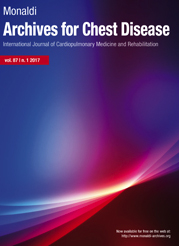Waist circumference and altered metabolic indices are associated with increased resting pulse rate in middle-aged adults
All claims expressed in this article are solely those of the authors and do not necessarily represent those of their affiliated organizations, or those of the publisher, the editors and the reviewers. Any product that may be evaluated in this article or claim that may be made by its manufacturer is not guaranteed or endorsed by the publisher.
Authors
Metabolic indices significantly impact cardiovascular health. Research on the influence of metabolic indices on resting pulse rate in younger adults is needed. Utilizing the National Longitudinal Study of Adolescent to Adult Health (Add Health) Wave 5 Public-use biological data, we performed a multiple linear regression analysis to determine the predictive factors of resting pulse rate in adults aged 32-42 years. We controlled for sex, anthropometrics, lipid indices, diabetic status, blood pressure, and antihypertensive use. The total number of participants was 1839 (weighted n=1,390,763), the mean age was 38.1 [standard deviation (SD)=2.0] and the mean pulse rate was 75.2 (SD=11.6). Notably, body mass index did not exhibit a statistically significant relationship with resting pulse rate. Conversely, females presented a statistically significant higher pulse rate than males when adjusted for other variables [p<0.001; coefficient = 4.83; 95% confidence interval (CI): 3.54-6.13], as did individuals with increased waist circumference (p=0.023; coefficient = 2.62; 95% CI: 0.39- 4.85). The data indicated a progressive rise in pulse rate correlating with elevated low-density lipoprotein and hemoglobin A1C levels, particularly among those with severe hypercholesterolemia (p=0.048, coefficient = 6.42; 95% CI: 0.12-12.71) and diabetes (p<0.001, coefficient = 7.11; 95% CI: 3.3-10.92). A significant increase was also observed in individuals with hypertension stage 1 and 2 [p<0.001 for both; coefficients = 2.98 (95% CI: 1.45-4.52) and 7.2 (95% CI: 5.28-9.12), respectively]. These findings underscore the necessity of considering metabolic indices in understanding the pathophysiology of elevated pulse rates in adults, thereby enhancing comprehension of cardiovascular tachyarrhythmias in younger adults.
Edited by
This research conducted a secondary analysis for publicly available, de-identified data, produced in compliance with the North Carolina Public Health Institutional Review Board (Chapel Hill, NC).How to Cite

This work is licensed under a Creative Commons Attribution-NonCommercial 4.0 International License.






